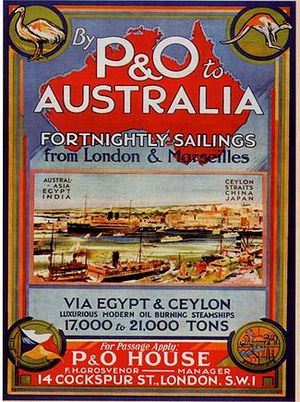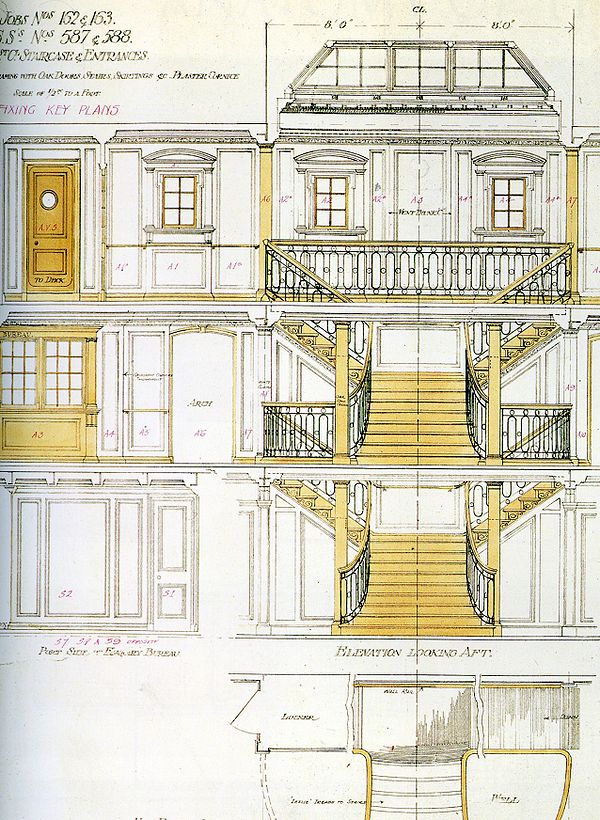RMS Mooltan
| RMS Mooltan | |
|
| |
| Career | |
|---|---|
| Nationality | British |
| Port | London |
| Owner: | Peninsular & Oriental Steam Navigation Company. |
| Service: | London, India, China, Australia, mail and passenger service. |
| Ordered: | 1918, Yard No 587 |
| Builder: | Messrs Harland & Wolff,Ltd,Belfast. |
| Launched: | 15 January 1923 |
| Maiden voyage: | 5 October 1923 |
| Fate: | Scrapped, Sold to British Iron and Steel Corporation (Salvage) Ltd in 1954, she was broken up by Metal Industries Ltd at Faslane in Scotland. |
| General characteristics | |
| Tonnage: | 20,847 gross tons. 12,836 net tonnage. Deadweight 16,032 tons |
| Length: | 600.5 feet |
| Beam: | 73.5 feet |
| Depth | 48.5 feet. Draught 34.10 feet (10.39 m) |
| Propulsion: | 2 Quadruple-expansion steam engines, producing 15,300 shaft horse power (13,300 ihp). Inverted direct acting, balanced to eliminate vibrations. Twin Screw. Boilers:6 D.E. and 2 S.E. Boilers with a steam pressure of 215 lb (98 kg). Fuel: Oil |
| Speed: | 17.5 knots |
| Paintwork | Black hull with white line, red boot-topping, upper works stone, funnels black. |
| Complement: | 327 First Class, 329 Second Class, Crew: 423 made up of 10 officers, 94 seamen, 22 engineers, 82 firemen and 215 saloon crew. |
The Peninsular and Oriental Steam Navigation Company placed the order for RMS Mooltan with Harland and Wolff Ltd on 29 November 1918. On the same date, an order was placed for her sister ship RMS Maloja. RMS Mooltan was given the yard #587 and work began on her in the Belfast shipyard. She was launched on 15 January 1923. She was then put through her sea trials and was finally delivered on 21 September 1923. At that time she was the first P & O ship over 20,000 tons, but she had sacrificed speed for reliability and comfort. The Mooltan had broad decks and would have a reputation for magnificent steadiness, although, because of her small rudder, handling would prove to be difficult.
Contents
Maiden voyage
SS Mooltan set off on her maiden voyage on 5 October 1923. She left the Port of Tilbury, and via Suez canal arrived in Sydney, Australia on 21 December 1923, calling at Colombo, Ceylon (Sri Lanka) and Melbourne on her way. She would make the voyage to Australia many times carrying many thousands of immigrants to a new life in Australia. In 1929 SS Mooltan was refitted with new engines, namely, two British Thompson Houston exhaust-driven electric turbines and motors with the effect that her top speed was increased to 17 knots (31 km/h). The accommodations were also overhauled. In 1931 she was again in the shipyard. All the accommodations were again overhauled and improved. In 1933 she carried Douglas Jardine's MCC cricket test team back home to Britain after the controversial “Bodyline” Test Series (see link at the bottom of the page). In 1938 alterations were made to the ship which allowed her to carry chilled beef.
Wartime requisition
After the outbreak of the Second World War, Great Britain and her allies realised that they would need ships for troop and equipment movements. On 6 September 1939 SS Mooltan was requisitioned for service as an armed merchant cruiser and was converted for such a task. Part of the conversion was the removal of her second funnel, which was in any case a dummy used to ventilate the engine room below; this was done to improve the arc of her anti-aircraft guns. Later on in the war the funnel was replaced but in a shorter form. As an armed merchant cruiser, SS Mooltan served in the South Atlantic based in Freetown, Sierra Leone, and she had the satisfaction of not losing a single merchant ship placed in her care. On 31 July the Mooltan was on the western approaches en route from Plymouth to Freetown when she was attacked by a German reconnaissance aircraft; she survived intact. On 20 January 1941 she was returned to P & O for conversion to a troopship. The work was carried out by R & H Green and Silley Weir Ltd in Tilbury. The work was then completed at Tyneside, Newcastle and by May 1941 she had been fully converted. In 1941 she carried troops out to the Middle East Campaign, and in May 1942 she took part in the North African landings at Oran, Algeria as part of Operation Torch. She was returned to P & O after the war on 16 July 1947.
Peacetime and a return to normal service
After her return to P & O in 1947, SS Mooltan was completely reconditioned before being returned to commercial use. On 26 August 1948 she was ready and returned to service; now she was 21,039 gross tons and she carried 1030 tourist class passengers. Most of the outward traffic was ministry of transport emigration work, and carrying “Ten Pound Poms” to Australia under an assisted passage scheme established and operated by the Australian government. The return trips were filled with P & O's own passengers. In April 1949 the Mooltan arrived at Tilbury the day after one of her passengers had died of smallpox. This was a Mr. Richard Allen (aged 69; he was a conveyancer and his cause of death, which is mentioned on the passenger list, is given as chickenpox). For the next three days the Mooltan was placed under quarantine before any of her passengers or crew could disembark; during this period five more of the passengers died. On 18 November 1953 SS Mooltan slipped out of Brisbane, Australia, on her last ever voyage, (Donald Seymour was the carpenter), arriving at Tilbury on 7 January 1954. Her mainly Asian crew joined the brand new RMS Arcadia three weeks later. On the 23rd of January 1954 SS Mooltan was sold for the sum of £150,000 to British Iron and Steel Corporation (Salvage) Ltd and she was sent to Metal Industries Ltd at Faslane in Scotland where she was broken up.
Specifications
- OWNERS: The Peninsular & Oriental Steam Navigation Co.
- SERVICE: London, India, China, Australia mail and passenger service.
- NATIONALITY AND PORT: British. Belfast.
- BUILDERS: Messrs. Harland & Wolff, Ltd., Belfast, 1,923.-yard (1,758.4 m) No. 587
- OFFICIAL NUMBERS: 145435. signal letters KPNG. call sign GFBC
- TONNAGE: 20,847 Tonnes gross. 12,836 Net tonnage. Deadweight 16,032 tonnes
- DIMENSIONS: 600.5 feet (183.0 m) long between perpendiculars.Breath 73.5 feet (22.4 m). X Depth 48.5 feet (14.8 m). Draught 34.10 feet (10.39 m). 5 decks.
- ENGINES: 2 Quadruple expansion 4 cylinder reciprocating steam engines. 15,300 shaft horse power Inverted direct acting, balanced to climate vibration. Twin screw. Normal speed of 17½ knots.
- BOILERS: 6 D.E.and 2 S.E. boilers, 215 lb (98 kg) shaft horse power pr. Oil Fuel
- PAINTWORK: Black hull with white line, red boot-topping, stone upper works, black funnels.
- COMPLEMENT: 327 1stT class passengers, 320 2nd class passengers.



